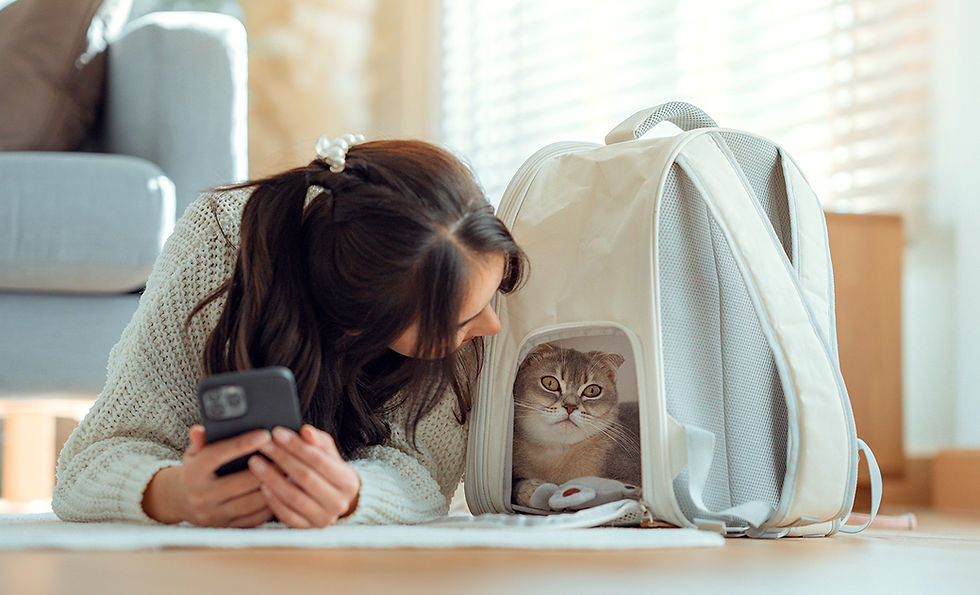- Dr. Jackie Schutt
- Dec 27, 2024
- 3 min read
Winter can be a fun season—but it’s also a time to be extra vigilant about your dog’s health. As you’re putting on your own heavy coat and gloves, remember your furry friend’s needs too. Drops in temperature can pose a health threat for all of us—yes, dogs can get hypothermia, too!
What to know about hypothermia in dogs
Let’s talk about why hypothermia is a doggone big deal. Sure, they have a coat of fur, but that doesn’t mean they’re impervious to the cold. Small breeds, dogs with short coats, puppies, and older dogs are especially at risk for hypothermia, but remember all dogs are at risk. This can lead to severe health problems and can even be fatal.
We’re here to guide you through some essential tips to keep your dog tail-wagging warm all winter long.
In this blog, we'll cover:
Signs of hypothermia in dogs
Stages of hypothermia in dogs
Preventative tips dog owners can take to prevent hypothermia
If you ever have any concerns about your dog’s health, please give VEG ER for Pets a call. VEG is here for you and your pets 24/7 and you’ll speak with a veterinarian right away.

Signs and stages of hypothermia in dogs
Understanding what to look for is half the battle. The signs and symptoms of hypothermia in dogs tend to appear in stages.
Early stages of hypothermia in dogs
Your dog may be in the early stages of hypothermia if they are:
Moderate signs of hypothermia in dogs
Confusion, disorientation
Decreased heart rate
Lack of coordination, i.e., difficulty walking; stumbling
Intense shivering
Shallow breathing
Late-stage signs of hypothermia in dogs
Coma, unconsciousness
Dilated pupils
Paralysis or muscle stiffness
Shivering has stopped
Weak pulse
The best way to know for sure if it’s hypothermia—a trip to your local VEG hospital. We have the expertise to properly diagnose and treat hypothermia in pets.

10 tips for preventing hypothermia in dogs
Here’s the scoop to keep your dog warm and hypothermia free this winter.
Bundle up - Just like you wouldn’t go out without a coat, your dog shouldn’t either. Dog sweaters or jackets are a must for short-haired breeds.
Limit outdoor time - On particularly cold days, keep bathroom breaks and walks short.
Provide a warm bed - Make sure your dog has a warm, cozy place to curl up.
No off-leash - Keep your dog on a leash during winter walks to prevent them from venturing onto ice or into dangerous areas.
Paw protection - Salt and de-icing chemicals can hurt your dog’s paws. Booties or paw balms can help!
Keep an eye on the thermostat - Make sure the inside of your home is warm, especially during nighttime when temperatures drop.
Avoid space heaters: They’re danger by design for pets. Think: dogs and space heaters come up to about the same height. Heaters can be a burn hazard, as they usually get super hot when in use. Also, dog fur can slip through the fan screen, leaving potential to tug out some fur or even draw a pet closer to the heating unit.
Reflective gear: Shorter days mean less light. Make your dog more visible to others by using reflective collars or leashes.
Check for snow build-up: Snow can get stuck in your dog’s paws and cause discomfort. Always check and remove after walks.
Keep ‘em dry: Wet fur loses its insulating abilities. Dry your dog off as soon as you get inside.
Bonus tip: prioritize your dog's health: the importance of vet check-ups
Regular vet visits can help you stay ahead of potential health issues. During these check-ups, your vet can give you personalized advice based on your dog’s breed, size, age, and overall health.
Call or visit VEG emergency vet hospital - now open
Keep these tips in mind, and you’re well on your way to ensuring your dog has a warm, happy, and hypothermia free winter. And remember, if you ever have any concerns, VEG emergency vet hospital locations are available 24/7 and are just a phone call away. We’re your go-to for emergency care and expert advice.




